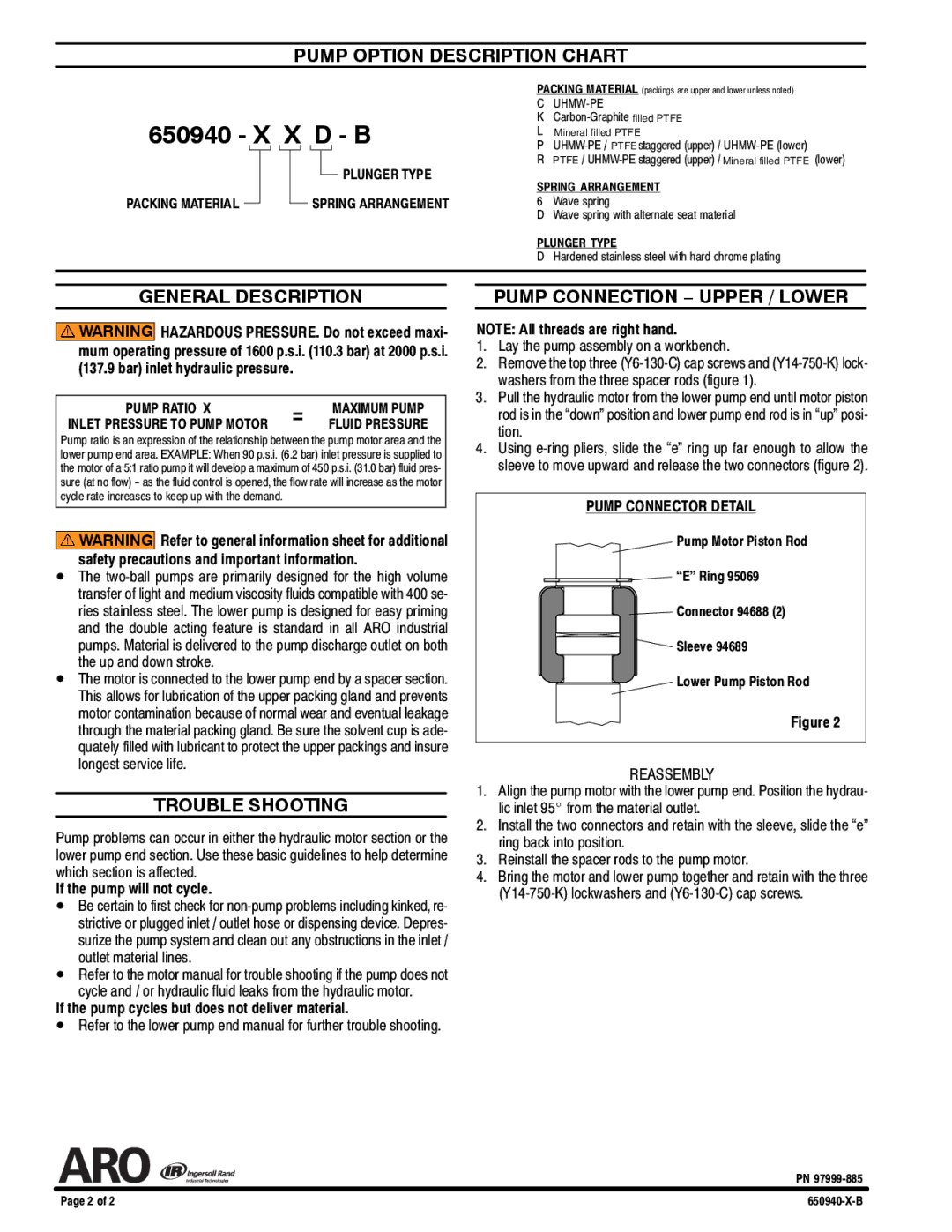650940-XXD-B specifications
The Ingersoll-Rand 650940-XXD-B is a versatile and robust air compressor renowned for its efficiency in demanding industrial applications. This compressor is designed to deliver a reliable performance in various settings, including manufacturing, construction, and automotive workshops. Its advanced engineering and high-quality construction make it an indispensable tool for professionals who require a dependable source of compressed air.One of the standout features of the Ingersoll-Rand 650940-XXD-B is its powerful motor, which provides exceptional performance while maintaining energy efficiency. The integrated motor utilizes a reliable power management system that optimizes consumption, ensuring that users receive maximum output without excessive energy costs. This efficiency not only saves money but also supports environmentally-friendly practices by reducing the carbon footprint of operations.
Another notable characteristic of this compressor is its advanced airend technology. Ingersoll-Rand has designed the airend to minimize wear and tear, which leads to increased longevity and reduced maintenance needs. This direct-drive system enhances overall performance by minimizing the number of moving parts, resulting in smoother operations and decreased noise levels.
The 650940-XXD-B also incorporates innovative cooling technology. Its effective heat exchanger and cooling system allow the compressor to operate at optimal temperatures, preventing overheating during long periods of use. This contributes to a more durable design and helps maintain consistent air pressure, which is crucial for many pneumatic tools and machinery.
In terms of usability, the compressor features user-friendly controls and an intuitive interface that streamline operation. Users can easily adjust settings and monitor performance, ensuring that the compressor runs at peak efficiency. Additionally, with its robust and portable design, the Ingersoll-Rand 650940-XXD-B can be moved around job sites with ease, making it suitable for both stationary and mobile applications.
Safety features are also a priority in the design of the 650940-XXD-B. It includes various safeguards to prevent overloads and mechanical failures, allowing users to operate the compressor confidently. This focus on safety and reliability solidifies its reputation as a leading choice among professionals in various industries.
In summary, the Ingersoll-Rand 650940-XXD-B air compressor combines power, efficiency, and advanced technology. Its unique features and reliable performance make it a vital asset for any operation requiring a steady supply of compressed air, ultimately driving productivity and enhancing workflow.

